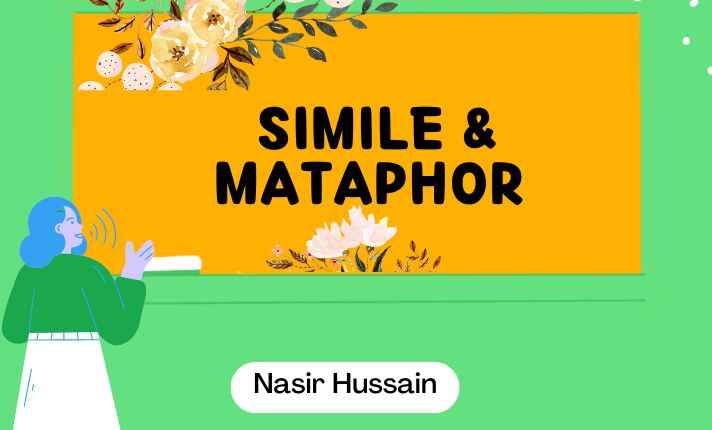How to Use the EXTRACT() Function in Laravel Queries & SQL Queries - Complete Guide
Read More


SLO: SWBAT identify and use figurative language in a text (similes and metaphors).
Prerequisite Knowledge
Materials
Key Points
· What
Figurative Language: Uses words or phrases in ways that are different from their literal meaning to create special effects or feelings.
Simile: A way to compare two things using "like" or "as." For example, "Her smile was as bright as the sun."
Metaphor: A way to say one thing is another, without using "like" or "as." For example, "The classroom was a zoo," meaning it was very noisy and messy.
How
Why
1. Opening
Waalaikum assalam! Good morning... Our class is like a zoo. Do you know what that means? It means that sometimes you all make so much noise that our class feels like a zoo. But, let me tell you, our class is wonderful, and you all are like precious pearls. In these two sentences, I’m comparing our class and you all to other things. Do you know what we call this kind of comparison? It’s called a simile and a metaphor. So today, we’re going to learn about similes and metaphors.
2. Introduction to New Material
First of all we’ll talk about figurative language. Figurative language is when we use words in a special way to make our writing more exciting. So there are so many figure of speeches; however, today we will only talk about simile and metaphor. So, a simile compares two things using the words "like" or "as." For example, ‘Her smile was as bright as the sun.’ Can anyone think of something else that might be as bright as the sun? Yes, maybe a flashlight! We’ll look at a few more examples together. Second is metaphors. A metaphor also compares two things, but it doesn’t use "like" or "as." Instead, it says one thing is another. For instance, ‘The classroom was a zoo.’ This means the classroom was very noisy and messy, like a zoo. We’ll review more examples on the board. Now, to help us understand, we’re going to read a short text together. As we read, I want you to listen carefully and identify similes and metaphors. We’ll highlight these parts in the text and talk about what they mean. If you’re unsure about what a simile or metaphor means, don’t worry! We’ll go over it together. Remember, similes use "like" or "as," and metaphors say one thing is another. I’ll ask you questions to make sure everyone understands so let’s read the text together.
Sara loved spending her weekends at the park. One sunny Saturday, she packed her bag and went out. When she got to the park, she saw the lake shining like a thousand diamonds under the sun. Sara laid her blanket under a big tree. The tree's branches were like big arms giving her shade. She opened her book and started reading. The story took her to a magical world with many adventures. After reading, Sara decided to walk around. She saw flowers in many colors, like a rainbow. She felt the cool wind, which was a gentle whisper telling her secrets. Sara then saw some kids flying kites. The kites moved in the sky like colorful birds. She joined them, and they all laughed together, making a happy sound. As the day ended, the sun began to set, turning the sky orange and pink. The sunset was a beautiful picture. Sara packed her things and went home, feeling as happy as a cat in a warm spot.
Did everyone understand? Great!
3. Guided Practice
Instructions: Alright, students it is time for your GP. Make 4 groups and then discuss and write 4 sentences using simile and metaphor. During this activity, I expect everyone to listen carefully, raise your hand if you have a question, and participate actively. Remember, it's okay to make mistakes because that's how we learn! So let’s go (For support: I will be making sure students are working together to come to the right answer. I will probe their thinking process by reminding them about the INM when needed. I will go offer support to the students who usually need more help first.) During debriefing with the class, To ensure equal participation I will randomly ask students who seem to be quite in the group activity to share their answers.
4. Independent Practice
Instructions: Alright students, now it is time for IP . Write few sentences about your best friend while using simile and metaphor. During this activity, I expect everyone to do it quietly as it is IP, raise your hand if you have a question. Once you are done with 3 sentences, just thumps up and then write to or three more sentences till other complete IP.
5. Closing
Alright students, let’s recall what we learned today. Who would like to share what is your take away today? It can be anything from IP, GP and slo… Ok now, Who can tell me why it is important to learn about figurative language Expected answer:…. Great Job, everyone! I will see you in tomorrow’s class Take good care of yourselves.
Good Luck!
Recent posts form our Blog

.png)

.png)


0 Comments
Like 1